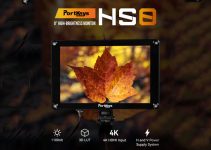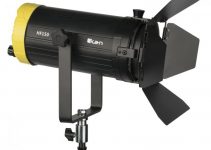Have you ever wondered how to create a custom LUT without using any complex mathematical algorithms or sophisticated color conversion workflows? Well, wonder no more. Most NLEs already provide a built-in feature to import 3D look-up tables with a few simple clicks, just like Photoshop CC allows users to export a custom LUT to multiple formats such as 3DL, CUBE, CSP, etc.
The main drawback of this process, however, is its limitation to using only the adjustment layers for color correction when exporting a LUT. Jordy Vandeput takes this workflow a few steps further, by showcasing a simple workaround that enables users to utilize the Camera Raw filter settings and export a 3D LUT thereafter.
The easiest way to create a LUT in Photoshop CC is by importing a screenshot from your NLE first and then adding a few adjustments layers on top. Just keep in mind that you have to export your still frame as a PNG or a TIFF file to be able to maintain the highest possible quality when round-tripping between the two applications. This workflow can be extremely convenient when you want to do some quick primary color tweaks, but for more flexibility, you should utilize a third-party application called IWLTBAP LUT generator.
In essence, it lets you copy any color adjustments done in Photoshop CC to a HALD image which is created by the app itself. Then you can generate a 3D LUT by utilizing the same HALD image. Unlike the first technique, however, this workflow provides the option to use additional adjustments in Photoshop CC such as the common Camera Raw filter that lets you modify more settings including Color Temperature, Tint, Exposure, Highlights, Shadows etc.
First, download and open the IWLTBAP LUT generator and create a HALD. Drag this .png file in Photoshop, copy the settings from the image and then save the changes you’ve made to the HALD file. Keep in mind, though, that when you’re using the Camera Raw filter, you don’t need to apply them directly to the image, but you should save the settings to a .xmp file instead.
Then simply drop the Camera Raw Filter on the HALD image and load the custom settings you’ve just made. Save the HALD image and then load it in the IWLTBAP LUT generator to create a LUT by utilizing the Convert to CUBE button. Finally, import the LUT in your NLE of choice.
Furthermore, if you work with the latest version of Premiere Pro CC, you can easily import the LUT by using the Lumetri tool, but there’s also a way to have it as part of the Lumetri LUT’s list. To do so, you’ll need to copy the LUT file into the installation folder of Premiere Pro CC by navigating to the dedicated Lumetri subfolder inside. This way, it will be a lot more convenient to use your custom LUTs by loading them directly from the Lumetri’s preset list than navigating to a certain file manually every time you open Premiere Pro CC.
[source: Cinecom.net]
Disclaimer: As an Amazon Associate partner and participant in B&H and Adorama Affiliate programmes, we earn a small comission from each purchase made through the affiliate links listed above at no additional cost to you.




